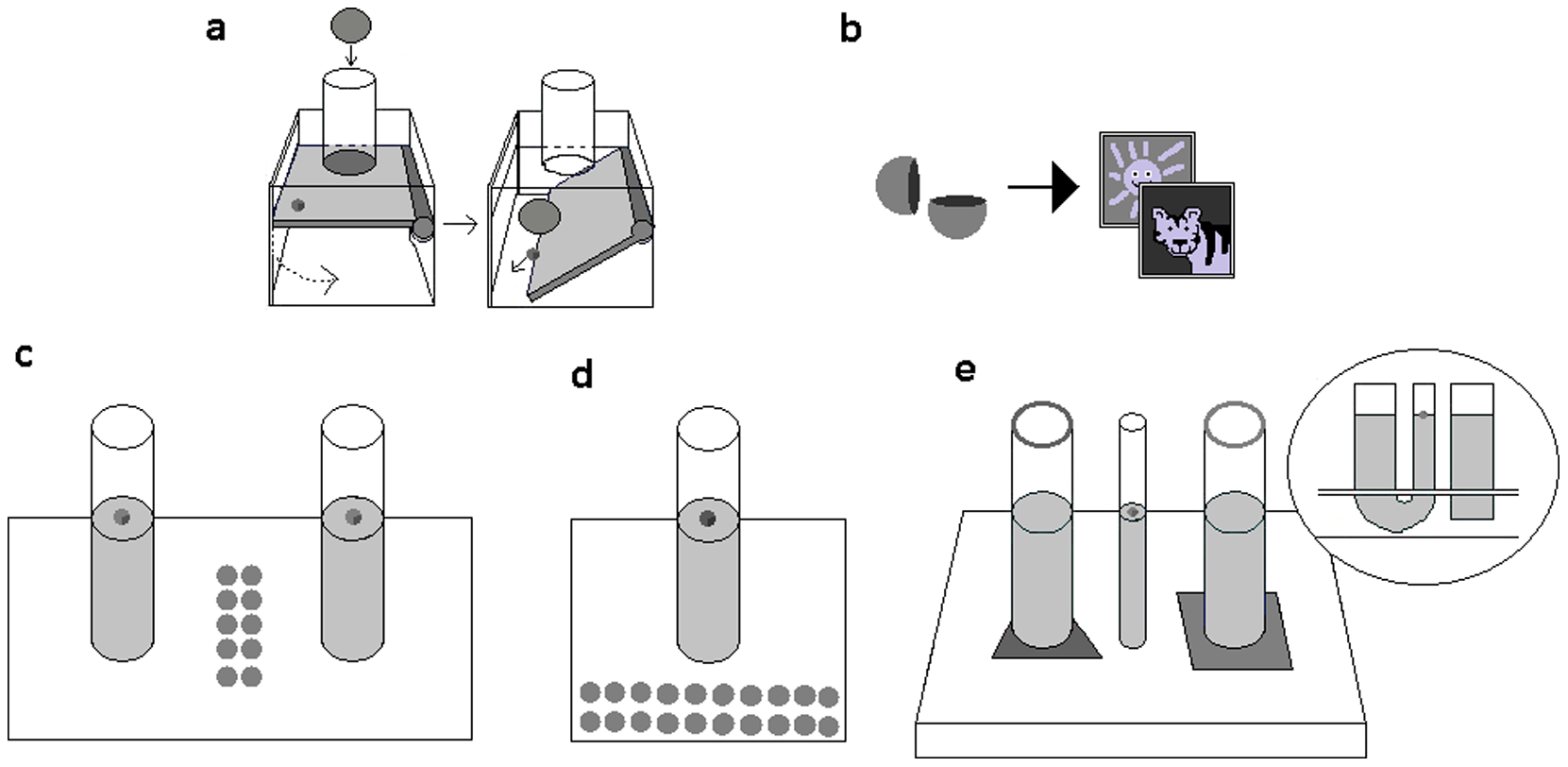He never wrote anything down but the stories people remembered were so intriguing virtually every moralistic fable before him (and after) got attributed to him. Now Aesop's Fables number in the 600s.
One of them, "The Crow and the Pitcher", highlights the 'necessity is the mother of invention' concept. A thirsty crow can't get his beak far enough down into a pitcher of water to drink, so he drops stones in until the water level rises.
Actual tests on crows showed that this was not just a folk tale about folk physics; birds do use associative learning, just like people. But when do people develop it? Is your kid smarter than a bird? A group of psychologists recently did that experiment. Yes, an actual psychology experiment rather than surveys of psychology undergraduates who got extra credit. It's okay to get excited, this is good stuff - and it isn't 1960s experimental psychology, this was done with consent from parents and under monitoring.
What was interesting was that while the results were the same, lots of birds and lots of kids were able to 'solve' the physics puzzle, the mechanisms they seemed to be using were different. Younger children (ages 3-4) are able to reason by exclusion and the researchers wanted to gauge the manner in which kids learned more than their performance. Still good to know your modern child can be as smart as a bird rather than dying of thirst, though. Jean Piaget would be proud.

This looks a lot more complicated than it is, proving that a picture is worth a thousand words but sitting in front of something it worth a whole bunch of pictures. I have a KitchenAid pasta attachment for my mixer that is impossible to understand based on the manual - yet I can make pasta by hand quite easily. Anyway, here we go; when a stone is dropped into the tube, the platform drops and the token is released. When a token is retrieved, it can be swapped for a sticker of the child's choice. Task 1: Water versus Sawdust. When a marble is dropped into the water, the level of the floating token rises. When a stone is dropped into the sawdust, the level of the token does not change. 1d. Task 2: Sinking versus Floating. When a marble is dropped into the water, it sinks and the level of the floating token rises. When a cork ball is dropped into the water it floats and the level of the token does not change. 1e. Task 3: U-tube. When a stone is dropped into the U-tube, the level of the floating token rises. When a stone is dropped into the separate tube, the level of the token does not change. Source: doi:10.1371/journal.pone.0040574.g001
By about age 8, children learned early on which tube they should drop the stone into to cause the token to rise, even when the mechanism was hidden or “counter-intuitive” - basically, dropping something in one tube with a 'hidden' part so that it looked like it was a different tube completely and therefore in the 'not possible' range of thinking. Counter-intuitive solutions messed up the birds in previous tests (Cheke LG, Bird CD, Clayton NS (2011) Tool-use and instrumental learning in the Eurasian jay (Garrulus glandarius). Animal Cognition 14: 441–455.).
Rooks, Eurasian Jays and New Caledonian Crows performed as well as human kids in the 5-7 age range, but no, your child is not a bird brain. Human kids are not going to be kept in an experiment for long so birds had a lot more opportunity to figure out what to do and human kids have two hands versus one beak, etc. It's still interesting stuff for research on how we act when causation is uncertain - and when we begin to learn it.
Citation: Cheke LG, Loissel E, Clayton NS (2012) How Do Children Solve Aesop's Fable? PLoS ONE 7(7): e40574. doi:10.1371/journal.pone.0040574




Comments